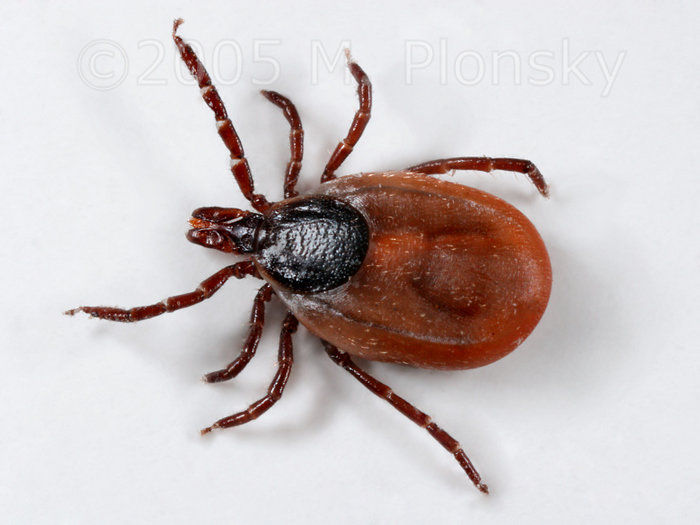
While most of us enjoyed the mild winter and the warm early spring, this unexpected gift came with a price — the early appearance of ticks, fleas, mosquitoes and other pests that are normally dormant during in winter.
By Melanie Cane
 While most of us enjoyed the mild winter and the warm early spring, this unexpected gift came with a price — the early appearance of ticks, fleas, mosquitoes and other pests that are normally dormant during in winter. This is especially bad news for our four-legged companions, and requires that we, as pet owners, be vigilant about protecting them (and ourselves) from these unwelcome interlopers, starting immediately. But, here are 5 TIPS TO ELIMINATE MOSQUITOES AFTER A STORM, which you can check out!
While most of us enjoyed the mild winter and the warm early spring, this unexpected gift came with a price — the early appearance of ticks, fleas, mosquitoes and other pests that are normally dormant during in winter. This is especially bad news for our four-legged companions, and requires that we, as pet owners, be vigilant about protecting them (and ourselves) from these unwelcome interlopers, starting immediately. But, here are 5 TIPS TO ELIMINATE MOSQUITOES AFTER A STORM, which you can check out!
There are several species of ticks, but those of greatest concern locally are the American dog, brown dog, and deer ticks. Ticks live under the dirt, in leaf piles or in their hosts’ nests in the colder months, and in high grass and on the tips of plants and shrubs in the warmer months. From their perches, these bloodsucking arachnids, (related to spiders and scorpions), fall or jump onto warm-blooded mammals and attach themselves by embedding their heads into the skin of their unsuspecting host.
Ticks carry many diseases, including Lyme, Rocky Mountain spotted fever, Ehrlichiosis, Tularemia, Babesiosis, and Q fever. In our area, Lyme disease and Ehrlichiosis are of the greatest concern.
Once an infected tick bites a dog, (the vectors are white-footed mice and white-tailed deer), it needs to be attached for at least 24 hours before disease transmission occurs.
Lyme disease manifests itself two to five months after transmission. The most common symptoms in dogs are fever, lameness that can alternate between legs, swollen lymph nodes and joints, decreased appetite, and lethargy.
The symptoms of Ehrlichiosis vary according to the phase of the disease. The acute phase, which develops one to three weeks after the bite, presents with cold-like symptoms including coughing, labored breathing, runny nose and watery eyes. Some dogs can fight off the infection, but if not, the disease enters the sub-clinical phase, characterized by slight anemia for months or years. If the disease progresses to the chronic phase, it can cause hemorrhaging (bloody nose), seizures, kidney and heart disease, swelling of the eyes and legs, and ultimately, a coma.
Diagnosis of both these diseases is based on symptoms, history of tick exposure, and specific blood tests. When caught early, they can be effectively treated with Doxycycline or a related antibiotic.
The best way to protect your pup from ticks is to avoid wooded areas, brush, and tall grass; use monthly topical medications such as Frontline; and thoroughly check your dog’s entire body every time you come inside. If you a find a tick, remove it with tweezers by grasping the tick as close to the dog’s skin as possible and then gently pulling the tick straight up. There is a Lyme disease vaccine, but its use is still controversial. Luckily, only 10% of dogs that are bitten become ill.
Fleas are also making an early and growing appearance this year. These pinhead-sized, hard-bodied, wingless insects can cause intense misery. A flea bite, which appears as a little red bump, itches which can be neutralized by an anti itch cream for dogs, but even worse itching comes in the form of contact dermatitis, an allergic reaction that can become infected due to the dog’s relentless scratching of the area. Fleas can also transmit tapeworm, (a parasite that lives in the small intestine), and can cause anemia. You can spot tapeworm in your dog’s poop. It looks like rice granules, (segments of the worm), or long white strings (the entire worm). Since fleas are tiny and jumpy, they often elude discovery. However, if you run a flea comb through your dog’s fur, you can see their excrement, which appears as tiny blackish flakes.
The best way to prevent fleas from attacking your dog, as well as infesting your home, is to keep your dog on flea prevention medication, vacuum frequently, keep rodents (that may be underneath your house or inside the heating and cooling system), away from your home, and regularly mow your lawn. If your dog is afflicted with fleas, he may need medical intervention to treat the allergic reaction, anemia, and tapeworms, as well as a medicated bath.
Last but not least, beware of the dreaded mosquito. These “flying hypodermic needles” — including the newly arrived Asian tiger mosquito, which bites during daylight hours — pose many serious health threats to dogs. These include the potentially fatal heartworm disease, West Nile virus and Encephalitis.
Mosquitoes can transmit the parasitic worm that causes heartworm disease in dogs and cats year round, which is why it is important to give your pet heartworm prevention medication, such as Heartgard, on a monthly basis. Protect your pet from mosquitoes by using topical medications as well as sprays, keeping your dog indoors during peak mosquito hours, and eliminating mosquito breeding grounds such as stagnant water.
Happy spring to man and man’s best friends!















